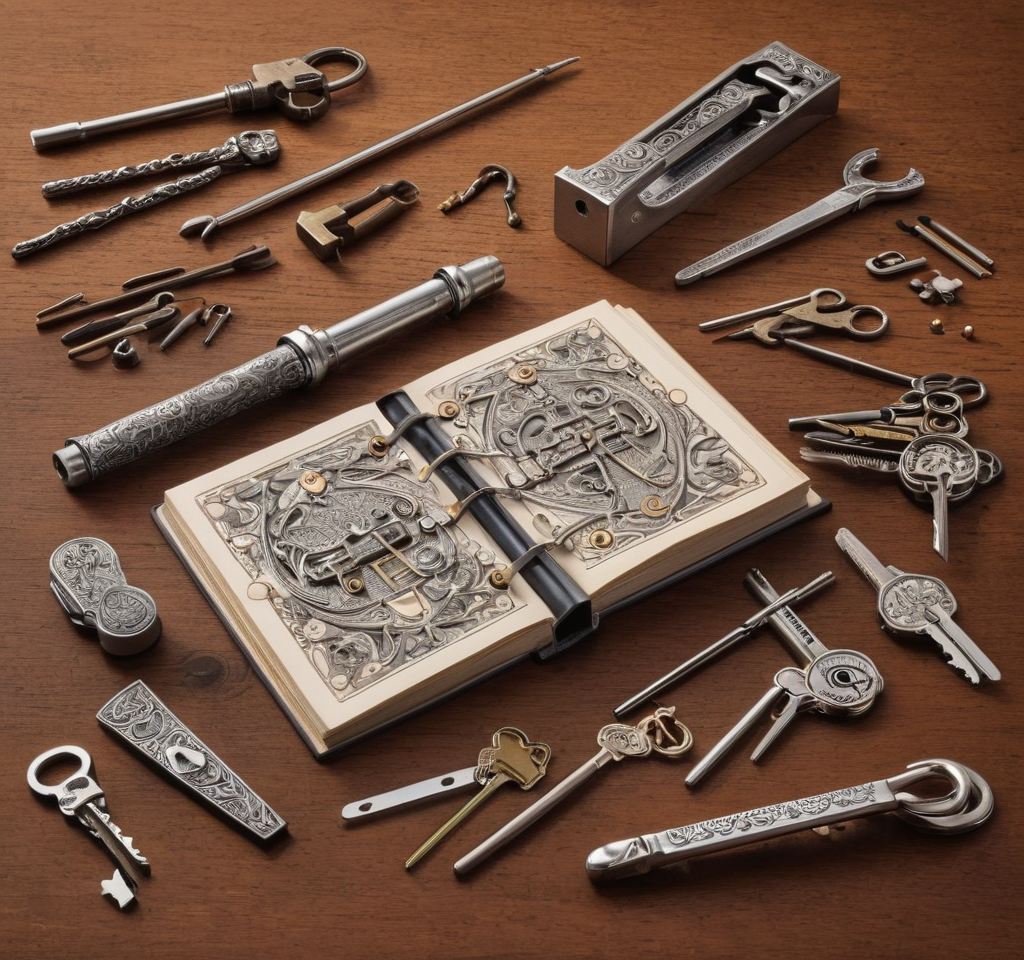
Unlocking the Mysteries of Lockpicking
Lockpicking, often depicted in Hollywood as a swift and effortless task, is in reality a complex art that requires patience, precision, and practice. Contrary to the cinematic portrayal of lockpicking in a matter of seconds, even seasoned locksmiths may need five to ten minutes to unlock a stubborn lock. If you’re seeking immediate access, this might not be the right avenue. This guide will primarily focus on the “lock in knob” type lock, which is the most beginner-friendly.
______________________________
\ K
| | | | | | / E
| | | | \ Y [|] Upper tumbler pin
^ ^ / H [^] Lower tumbler pin
^ ^ ^ ^ ^ ^ \ O [-] Cylinder wall
/ L (This is a greatly simplified
\ E drawing)
______________________________/
Acquiring the Right Tools
Before you embark on your lockpicking journey, you’ll need a pick set. Ideally, if you have a locksmith acquaintance, they could craft a set for you. This would be the most suitable set for your use. However, if you can’t find a willing locksmith, don’t lose heart. You can create your own set with the right tools and a bit of patience.
Crafting Your Own Pick Set
To make your own pick set, you’ll need a very small allen wrench set. The wrenches should be small enough to fit into the keyhole slot. Bend the long end of the allen wrench at a slight angle (not 90 degrees). Then, use a grinder or a file to smooth the end until it is rounded to prevent it from getting stuck inside the lock. Test your tool on doorknobs at your home to ensure it slides in and out smoothly.
The Role of the Screwdriver
A small screwdriver is another essential tool in your lockpicking kit. It must be small enough to be used in the same lock at the same time as your pick, one above the other. The screwdriver plays a crucial role in maintaining the position of the pins once they’ve been correctly aligned.
Understanding the Inner Workings of a Lock
To effectively pick a lock, you need to understand its interior. The objective is to push the pin up so that the space between the upper pin and the lower pin aligns with the cylinder wall. However, once a pin is pushed up, it tends to fall back down. This is where the screwdriver comes in. By inserting the screwdriver into the slot and turning, you create tension that keeps the correctly aligned pins from falling back down.
The Process of Lockpicking
Start from the back of the lock and work your way to the front. Once all the pins are correctly aligned, you’ll hear a click, the screwdriver will turn freely, and the door will open.
Practice Makes Perfect
Don’t be disheartened if you don’t succeed on your first attempt. It might take you twenty to thirty minutes initially, but with practice, your speed and proficiency will improve.
Remember, lockpicking should be used responsibly and ethically. It’s a skill that can be used for legitimate purposes, such as locksmithing or lock sport, and should not be used for illegal activities.
Conclusion
Lockpicking is a fascinating skill that requires a blend of patience, precision, and understanding of the mechanics of locks. With the right tools and plenty of practice, you can master this intricate art. Always remember to use this skill responsibly and within